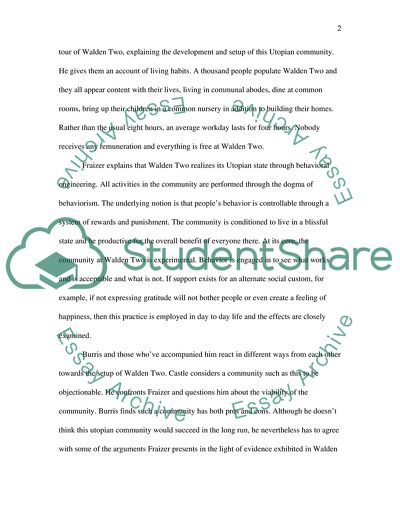Cite this document
(Walden Two by B.F. Skinner Book Report/Review Example | Topics and Well Written Essays - 3000 words, n.d.)
Walden Two by B.F. Skinner Book Report/Review Example | Topics and Well Written Essays - 3000 words. https://studentshare.org/literature/1705587-free-willdeterminism-and-the-perfect-society
Walden Two by B.F. Skinner Book Report/Review Example | Topics and Well Written Essays - 3000 words. https://studentshare.org/literature/1705587-free-willdeterminism-and-the-perfect-society
(Walden Two by B.F. Skinner Book Report/Review Example | Topics and Well Written Essays - 3000 Words)
Walden Two by B.F. Skinner Book Report/Review Example | Topics and Well Written Essays - 3000 Words. https://studentshare.org/literature/1705587-free-willdeterminism-and-the-perfect-society.
Walden Two by B.F. Skinner Book Report/Review Example | Topics and Well Written Essays - 3000 Words. https://studentshare.org/literature/1705587-free-willdeterminism-and-the-perfect-society.
“Walden Two by B.F. Skinner Book Report/Review Example | Topics and Well Written Essays - 3000 Words”. https://studentshare.org/literature/1705587-free-willdeterminism-and-the-perfect-society.


